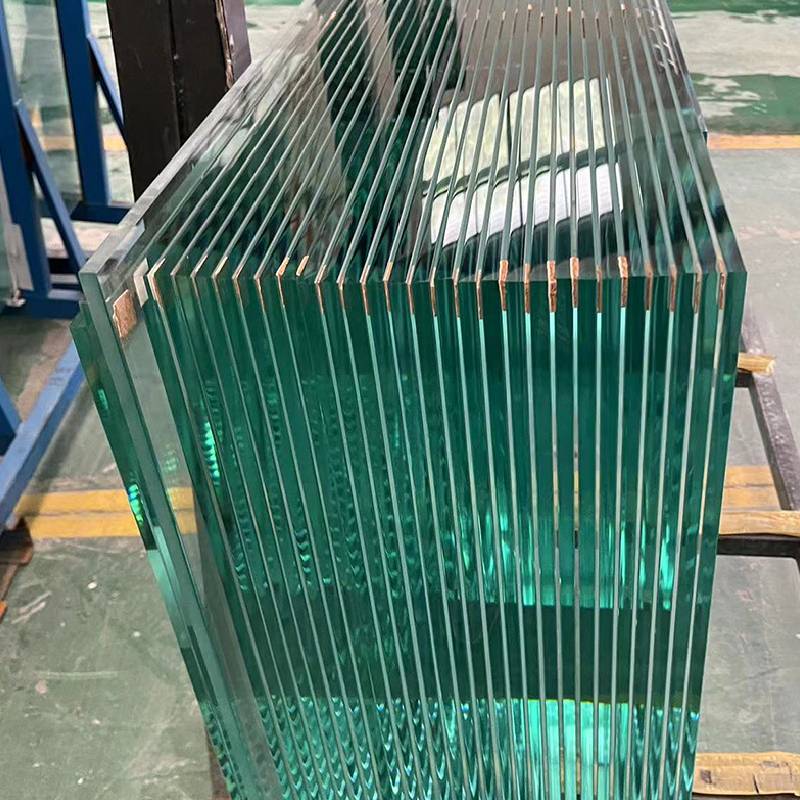Types of Reflective Glass An Overview
Reflective glass, also known as mirror glass or reflective glazing, is a popular architectural element that serves both aesthetic and functional purposes. By using a thin metallic coating on the surface of regular glass, this material effectively reflects light and heat, thereby improving energy efficiency in buildings. In this article, we will explore the various types of reflective glass, their properties, applications, and the advantages they offer.
1. Solar Reflective Glass
One of the most common types of reflective glass is solar reflective glass. This type is designed specifically to minimize solar heat gain while maximizing daylight entry. The glass is coated with a layer of metallic substances that reflect a significant portion of the sun's rays, particularly infrared radiation, while allowing visible light to pass through. Solar reflective glass is ideal for use in commercial buildings, offices, and residential structures located in regions with high solar exposure. Benefits include reduced energy costs for air conditioning, improved interior comfort, and protection of furnishings from UV damage.
2. Low-E Reflective Glass
Low Emissivity (Low-E) reflective glass is another advanced option. This glass is coated with a transparent metallic oxide that reflects heat back to its source. In winter, it helps to retain indoor heat, while in summer, it reduces the amount of solar heat entering a building. Low-E glass is particularly effective in climates experiencing extreme temperature variations, as it provides year-round energy efficiency. This type of reflective glass not only enhances comfort but also contributes to lower energy bills, making it a popular choice for both residential and commercial builders.
3. Tinted Reflective Glass
types of reflective glass
Tinted reflective glass incorporates pigments to reduce glare and enhance privacy. Unlike solar reflective glass, which primarily focuses on heat and light reflection, tinted glass absorbs a portion of the visible light spectrum, creating a darker appearance. This feature is beneficial in settings where glare reduction is essential, such as in offices with significant window exposure or in residential areas requiring added privacy. Tinted reflective glass also comes in various shades and colors, allowing for design versatility while maintaining functionality.
4. Mirrored Glass
Mirrored glass is a highly reflective type of glass that provides a clear, polished appearance reminiscent of traditional mirrors. It is often used in decorative applications, such as accent walls, facades, and interior design. While mirrored glass is primarily aesthetic, it can also provide practical benefits, like reducing heat gain and glare in buildings. Moreover, it contributes to the illusion of space, making smaller areas appear larger and more open.
5. Smart Reflective Glass
With advancements in technology, smart reflective glass has emerged as a cutting-edge option. This glass can change its reflective properties based on environmental conditions or user settings. For instance, it can transition from clear to opaque or adjust its level of reflectivity in response to sunlight. Smart glass can be controlled manually or automatically, making it an excellent choice for modern architecture, energy-efficient buildings, and smart home systems. The versatility of smart reflective glass enhances energy savings and provides dynamic control over privacy and light levels.
Conclusion
Reflective glass serves as a multifunctional tool in modern architecture, blending aesthetic appeal with energy efficiency. The various types of reflective glass, including solar reflective, Low-E, tinted, mirrored, and smart glass, each offer unique advantages tailored to specific applications and needs. As architects and builders continue to seek sustainable solutions, reflective glass will undoubtedly play a crucial role in achieving energy-efficient designs. By selecting the appropriate type of reflective glass, property owners can enjoy enhanced comfort, reduced energy costs, and the beauty of natural light—all while contributing to a greener future.
 Afrikaans
Afrikaans  Albanian
Albanian  Amharic
Amharic  Arabic
Arabic  Armenian
Armenian  Azerbaijani
Azerbaijani  Basque
Basque  Belarusian
Belarusian  Bengali
Bengali  Bosnian
Bosnian  Bulgarian
Bulgarian  Catalan
Catalan  Cebuano
Cebuano  Corsican
Corsican  Croatian
Croatian  Czech
Czech  Danish
Danish  Dutch
Dutch  English
English  Esperanto
Esperanto  Estonian
Estonian  Finnish
Finnish  French
French  Frisian
Frisian  Galician
Galician  Georgian
Georgian  German
German  Greek
Greek  Gujarati
Gujarati  Haitian Creole
Haitian Creole  hausa
hausa  hawaiian
hawaiian  Hebrew
Hebrew  Hindi
Hindi  Miao
Miao  Hungarian
Hungarian  Icelandic
Icelandic  igbo
igbo  Indonesian
Indonesian  irish
irish  Italian
Italian  Japanese
Japanese  Javanese
Javanese  Kannada
Kannada  kazakh
kazakh  Khmer
Khmer  Rwandese
Rwandese  Korean
Korean  Kurdish
Kurdish  Kyrgyz
Kyrgyz  Lao
Lao  Latin
Latin  Latvian
Latvian  Lithuanian
Lithuanian  Luxembourgish
Luxembourgish  Macedonian
Macedonian  Malgashi
Malgashi  Malay
Malay  Malayalam
Malayalam  Maltese
Maltese  Maori
Maori  Marathi
Marathi  Mongolian
Mongolian  Myanmar
Myanmar  Nepali
Nepali  Norwegian
Norwegian  Norwegian
Norwegian  Occitan
Occitan  Pashto
Pashto  Persian
Persian  Polish
Polish  Portuguese
Portuguese  Punjabi
Punjabi  Romanian
Romanian  Russian
Russian  Samoan
Samoan  Scottish Gaelic
Scottish Gaelic  Serbian
Serbian  Sesotho
Sesotho  Shona
Shona  Sindhi
Sindhi  Sinhala
Sinhala  Slovak
Slovak  Slovenian
Slovenian  Somali
Somali  Spanish
Spanish  Sundanese
Sundanese  Swahili
Swahili  Swedish
Swedish  Tagalog
Tagalog  Tajik
Tajik  Tamil
Tamil  Tatar
Tatar  Telugu
Telugu  Thai
Thai  Turkish
Turkish  Turkmen
Turkmen  Ukrainian
Ukrainian  Urdu
Urdu  Uighur
Uighur  Uzbek
Uzbek  Vietnamese
Vietnamese  Welsh
Welsh  Bantu
Bantu  Yiddish
Yiddish  Yoruba
Yoruba  Zulu
Zulu 

